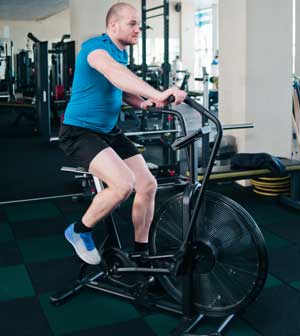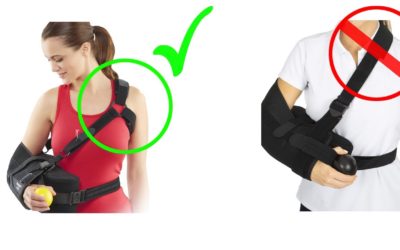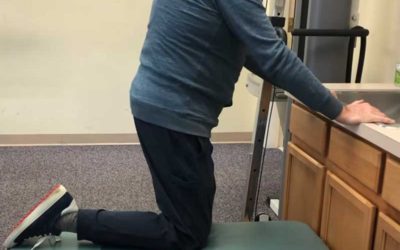How To Use A Stationary Bike After A Total Knee Replacement
An exercise bike is an excellent option after knee replacement surgery.
The adjustable seat and variable resistance can make it the perfect tool for increasing range of motion, improving endurance, and getting you back to the active lifestyle you enjoy.
Lightly used exercise bikes can be purchased on eBay and Facebook marketplace as well as second-hand retailers like Play It Again Sports.
New bikes may be purchased on Amazon or other sports retailers.
If possible, it is recommended that you purchase your bike before surgery in order to get a feel for riding it.
Top 4 Best Type of Exercise Bike To Rehab Knee
1.) Recumbent Bike
Recumbent bikes are the most popular bikes used in rehab for post-surgical care following a total knee replacement.
These bikes are most easily identifiable by the large seat and backrest.
If you would like more information about recumbent bikes and how to pick the best one for total knee replacement rehab check out this article.
2.) Upright Stationary Bike
An upright stationary bike has a seat positioned higher than the pedals and usually more over the pedals than a recumbent bike.
3.) Airdyne Bike
Although Airdyne is a model and not a type of bike, it deserves its own category.
The Schwinn Airdyne has been a classic bike for decades. Made of mostly all steel, this workhorse in the gym almost never breaks down and has helped countless individuals build strength and endurance but leveraging the power of the wind.

4.) Spinning Bike
A spinning bike has been popularized by spinning classes. This stationary bike is similar to a classic road bike. It has a small seat and positions the rider in more of a forward-leaning position. This bike is great for speed and endurance and is preferred by endurance athletes over recreational cyclists.
What Is A Recumbent Exercise Bike?
A recumbent bike is a type of stationary bike that has a larger seat with a full-length backrest.
It is often recommended for individuals with low back pain attributed to spinal stenosis.
It is differentiated from an upright, stationary bike because the pedals are positioned in front of the pelvis and the body is in a more reclined position.
Can I Do Too Much Exercise After Knee Replacement?
Absolutely YES!
Your body is no different than an Olympic athlete’s body. You need rest and recovery as much as you need exercise.
After a total knee replacement, your body has experienced a tremendous amount of trauma.
The pain levels are high which increases your stress hormones.
You aren’t sleeping very well which slows down your tissue healing.
And the emotional stress levels are usually through the roof so all of this makes for a challenging time for your body to recover.
During the first two weeks, you should get plenty of sleep, great nutrition, and focus on healing/recovery.
During the next three to six weeks your stamina will improve and your ability to move will skyrocket.
Finally, after 6 weeks the surgical incision will be healed and you will be ready to really start to increase the frequency and intensity of exercise.
Is A Bike Good For Limited Knee Flexion?
Yes! A bike is great for limited knee flexion if you want to improve your knee flexion.
An upright stationary bike is usually preferred over a recumbent bike because it required less knee flexion initially.
As your range of motion improves you may choose to move your seat closer to the pedals to continue to increase knee flexion.
How Much Knee Flexion Will I Need During Cycling?
This depends on the kind of bike you choose. A general rule of thumb is about 90 degrees of flexion to complete a full revolution. If you move the seat closer to the pedals you will need more.
If you cheat a bit and move your seat further away from the pedals you may complete a revolution with less knee flexion.
Next, as your range of motion improves you would move the seat closer to a more normalized position.
How Much Pain Can I Expect After A Total Knee Replacement (TKR)?
A total knee replacement is often considered more painful than a total hip replacement.
The first 24-48 hours after the procedure your anesthesia from the surgery will help manage the initial pain response.
Follow your surgeon’s guidance for dosing your medication, but many clients will say after the first 48 hours the pain may intensify but should always be manageable.
The pain should never reach the point of agony. A pain level of 7 out of 10 on the Mankoski Pain Scale is described as “Makes it difficult to concentrate, interferes with sleep. You can still function with effort. Stronger painkillers are only partially effective.”
If your pain levels reach a 7 it is recommended you contact your surgical team.
Can I Have A Knee Replacement Without Doing Physical Therapy?
Yes! The trend has been toward less physical therapy for individuals who do not have complications following a total knee replacement.
As a physical therapist myself, I would rather a client receive a couple of physical therapy sessions before surgery to better prepare for what is to come, than do less follow-up therapy as long you are progressing normally.
Is An Exercise Bike Good For Knees?
Yes, an exercise bike can be great for your knees. But so can lots of other exercise equipment.
The best piece of exercise equipment is the one you know you will enjoy.
I have worked with clients who use a treadmill every day and others who use a treadmill to hang clothes.
Is An Airdyne Bike Good For Knee Rehab?
One of my favorite exercise bikes is the Schwinn Airdyne. The ability to use the arms and legs in combination or just the arms or just the legs is a huge benefit.
The steel body of the bike also makes it last for a long time without the risk of breakdown.
I have seen these bikes resell on Craigslist and eBay for top dollar simply because they age so well.
Can I Use A Treadmill After Knee Replacement Surgery?
Yes, a treadmill can be a wonderful addition to a total knee replacement recovery program.
The treadmill offers a clean, flat, well-lighted surface to walk on.
Since you are probably a human being reading this post, you likely move through space on two feet. A treadmill is one of the most functional pieces of training equipment that allow you to weight-bear and walk the way you would in the community.

Anthony Maritato, PT
Physical Therapist
Anthony Maritato, PT has been a licensed physical therapist and private practice owner since 2006. Ohio license #PT011602.
Anthony has been passionate about helping patients recover from total knee replacement surgery as well as rotator cuff repair surgery.
More Blog Posts …
Best Shoulder Pulleys for Frozen Shoulder for 2022
This article has been updated on 02/17/2023 by author - Anthony Maritato, PTAre Shoulder Pulley Exercises Good for Frozen Shoulder (Adhesive Capsulitis)? Yes, shoulder pulley exercises are a great way to unfreeze a frozen shoulder. A licensed physical therapist will...
When can I take off my shoulder sling after rotator cuff repair shoulder surgery?
Every surgeon will have a very specific post surgical protocol and instructions telling you exactly what you are allowed to do and not allowed to do after surgery. Most surgeons will require you to wear your shoulder sling after rotator cuff repair shoulder surgery...
2022 Guide to Buying An Elliptical After Total Knee Replacement Surgery
The Schwinn Elliptical 411 is my overall favorite pick for anyone recovering from a total knee replacement in 2022. What to expect in this article: Benefits of using an elliptical after total knee replacement Challenges of using an elliptical after total knee...
When Is Kneeling Safe After A Total Knee Replacement
Unless your surgeon specifically advised against kneeling you are generally safe to start kneeling after 6-weeks or once your surgical incision is healed.Kneeling After A Total Knee Replacement Depending on the implant and bone quality, kneeling after a knee...
Pinching Behind Your Knee After Total Knee Replacement
A common report I get from clients who are struggling to improve knee flexion is that they are feeling a pinch in the back of their knee as they try to bend it. This pinching in the back of your could may be caused by the implant pinching the soft tissue or a baker's...
What to Expect the First Week After your Knee Replacement Surgery
Week 1 After Knee Replacement Surgery If your surgery was performed in an outpatient surgery center then you would have likely been discharged to your home the day of surgery. In this article I will be discussing what you need during the first week after total knee...
How to Choose the Best Physical Therapist
There are many factors that go into choosing the best physical therapist for your rehabilitation. One such factor is access. If you are having a total knee replacement you will inevitably have questions about your incision or positioning or any number of other...
9 BEST Gift Ideas for Anyone Having A Total Knee Replacement in 2022
This article includes my favorite list of the 9 Best Gift Ideas for Anyone Having a Total Knee Replacement in 2022. Cyotherapy Moist heat Walker tray/basket Ankle & Calf Massager Rolling Pin Water Bottle Journal Audio Book Membership Meal Delivery Cryotherapy...
Tight Calf Muscle After Knee Replacement
Calf pain after a total knee replacement or other knee surgery if very common. Part of the problem is the swelling, part is weakness in the muscle and part is the dramatic change in activity level.
In this video I explain these three causes of calf pain as well as some solutions we usually recommend in the clinic. After watching this video I will share recommended exercises you can ask your therapist about.
Baker’s Cyst After Knee Replacement
A Baker's cyst resolved in only a small number of patients (15%) one year after TKA and symptoms from the cysts persisted in 31%. Cite this article: Bone Joint J 2016;98-B:1185-8.[1]What is a Baker's Cyst?If you have ever felt that painful swollen lump behind your...



